Description
Tarapur Print technique is a unique combination of Alizarin (mordant printing) & Dabu (resist printing) printing practiced in twin villages of Ummedpura & Tarapur. Tarapur print contains a variety of design patterns including geometrical pattern and even 2 blocks are sufficient to draw a single pattern unlike Nandana where minimum 3 blocks are used to draw a single design pattern.
Pharad is a very small and intricate design used to print on fabric to create “Ghaghra” (Long skirt) for different communities identified with particular design printed on their clothing. Mainly it was printed on fabric to make Ghaghra. Pharad requires extra dexterity and skill to print on fabric because of its very small shape and intricate pattern.
In this pattern we designed new blocks with new designs with intricate floral pattern for this saree collection.
In this technique fabric is washed with solution of castor oil and washing soda, works as a natural soap. After washing is done to extract impurities from it is then dyed with myrabalan (Harad fruit) dye. After dyeing it is dried under sun then fabric is ready for printing. Now fabrics first printed with syahi begar (alum to get red and iron rust to get black color). After printing with two mordant fabric is put in a cool and dry place for 3-4 days so that it is well absorbed by the fabric. Now fabric is washed in a flowing or running water to wash extra mordant. After washing it is gone through “Bhatti” (dyeing) process, in which printed fabric is dyed with dhawda flower and alizarin. In place of alum print red color occurs and iron rust printed black color becomes fixed. Few decades ago roots of al tree (morinda tinctoria) or madder roots were used to get red color. Today it is replaced with synthetic alizarin.
Now fabric is again printed with a resist paste made from clay, guar gum and lime. After printing with resist paste it is again put in a cool and dry place for 2-3 days so that resist paste gets dry. Now fabric is dyed with Indigo for blue background, kashish (ferrous sulphate) for different shades of grey or dark tan color, pomegranate peel for yellow background. To get green and yellow shade, indigo dyed fabric again dyed with pomegranate peel dye.
“Chippa” community is practicing the craft of hand block printing in Tarapur since 400 years, who claims to belong to the lineage of Sant Namdev, a famous saint of “Bhakti Tradition” in India. 10-15 years back some 100 families of “Chippa community” were involved in this craft restricted to the 3-4 families today. It’s all due to tough competition from the chemical screen printing and imitating of designs by digital printers selling it at cheaper prices than hand block printing. But they are still following the traditional methods in preparing the fabrics using semi-natural and natural dyes.

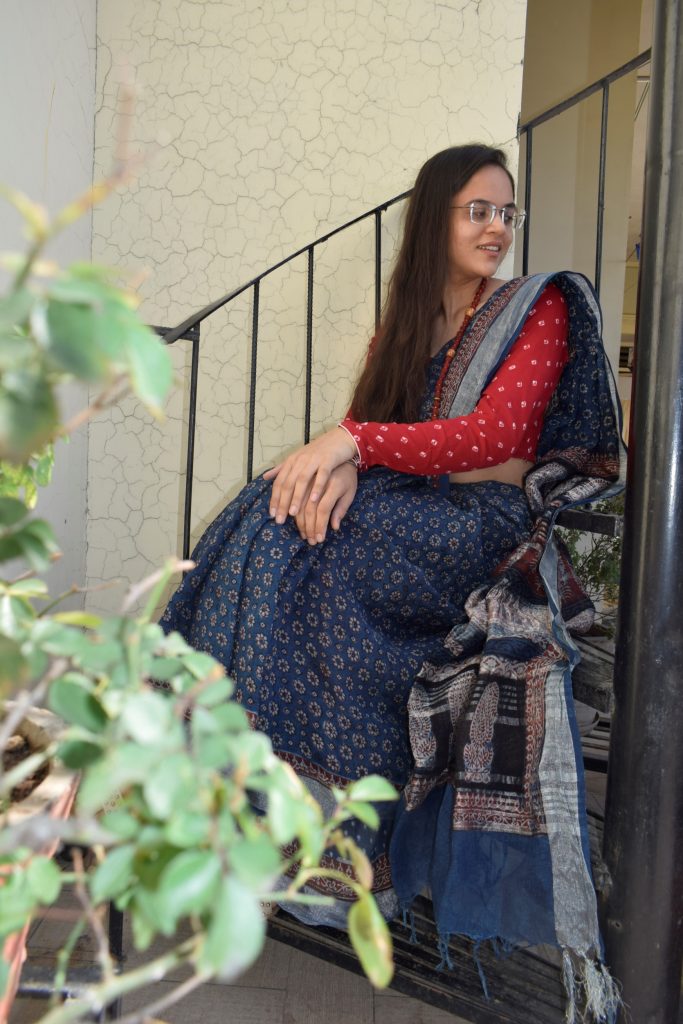
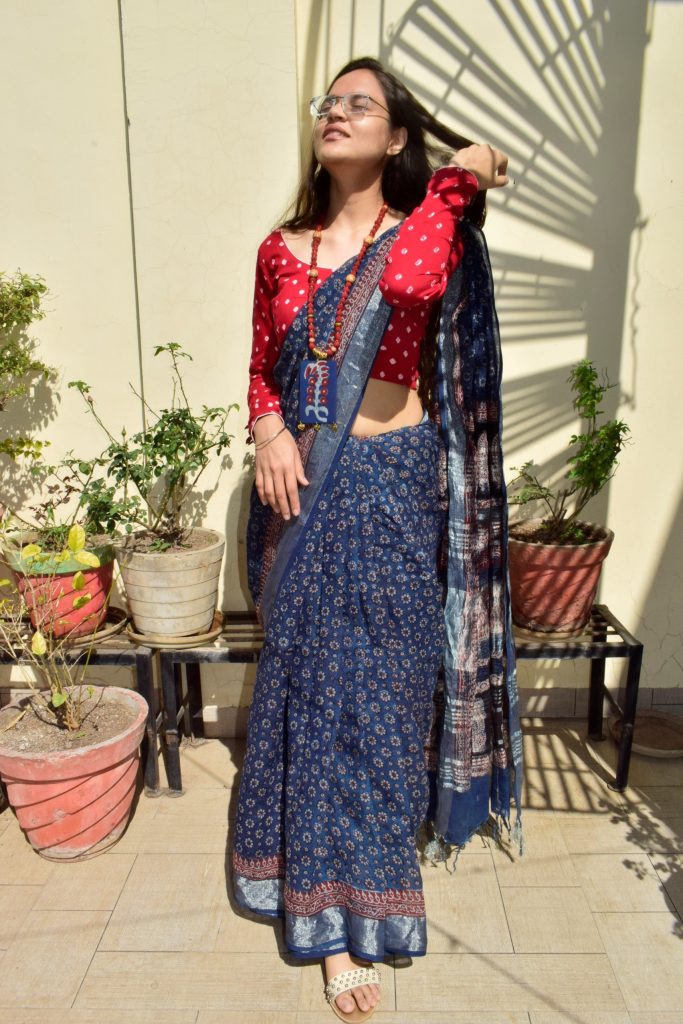
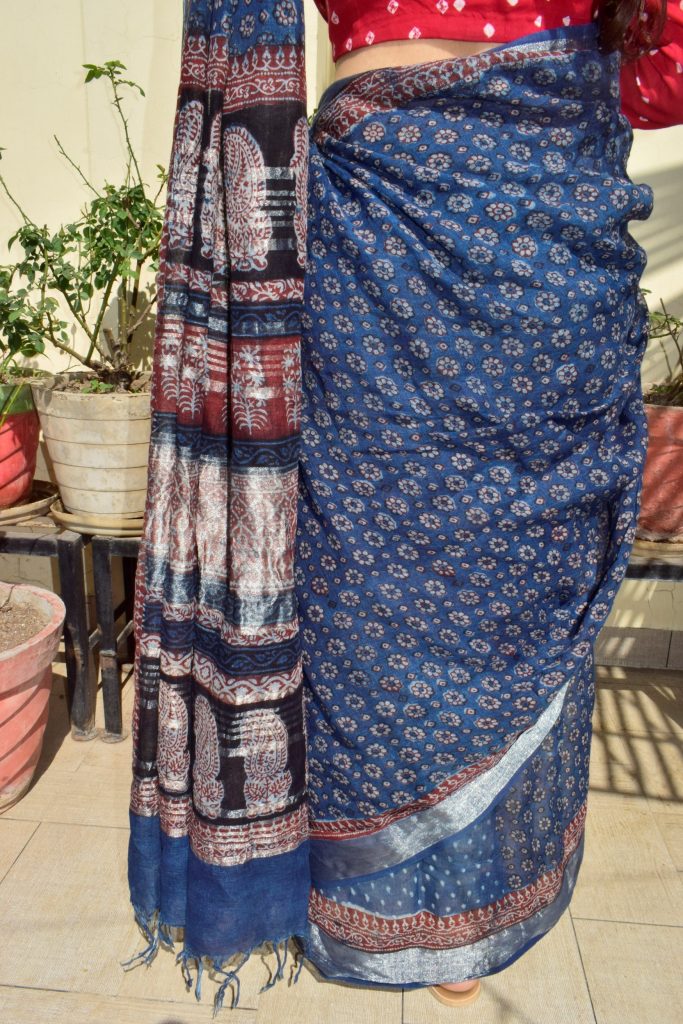
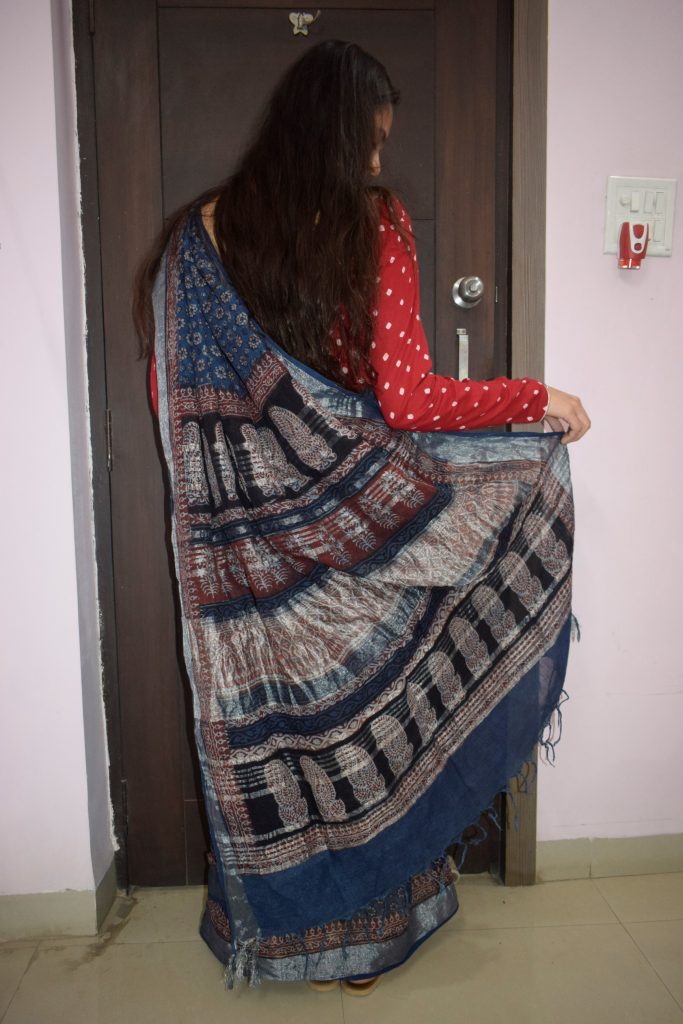
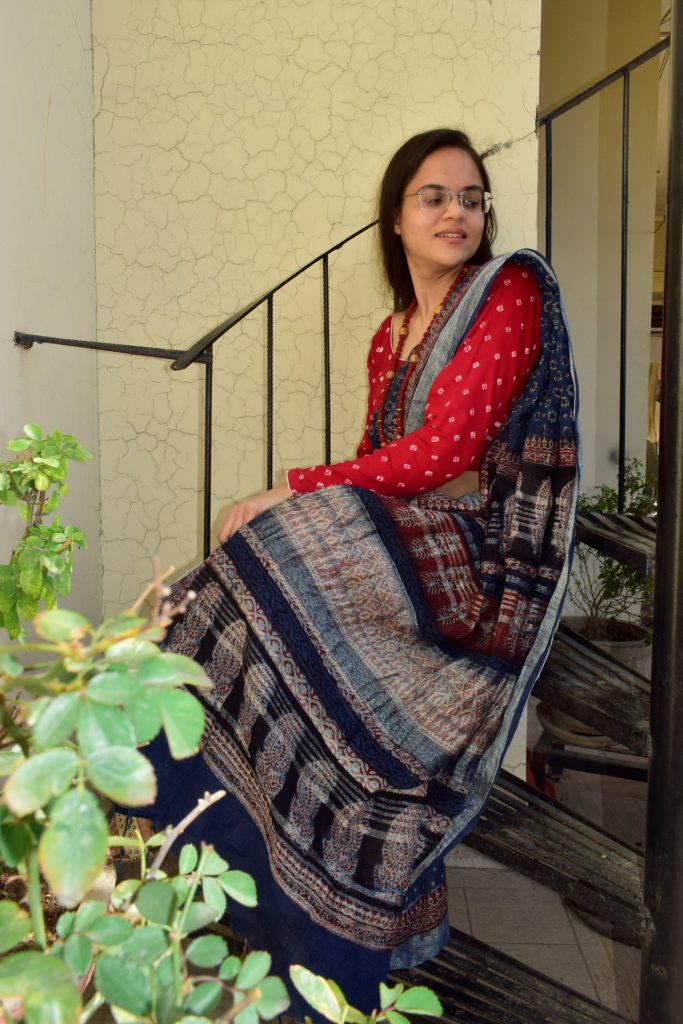


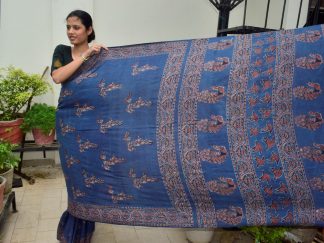
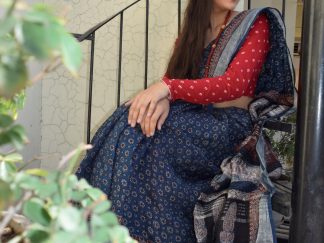
Reviews
There are no reviews yet.